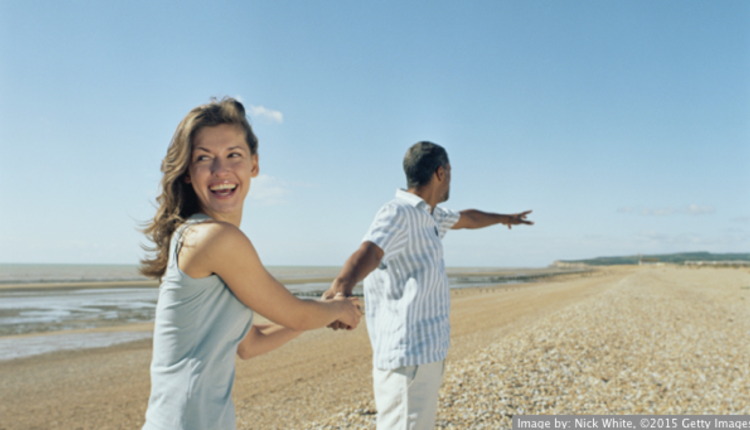
In Profiles of the Future 51 years ago, Arthur C. Clarke famously said, “Cavemen froze sleeping on coal beds.” The irony of this statement is alive and well today for corporate decision makers whose ability to win the future is limited by their ability to make sense of data that is right under their noses. Said another way, coal beds are just oil in another form, and today’s coal bed is data.
Data is the new oil:
- Discovered in 1997 by Michael Cox and David Ellsworth
- Extracted to analyze, link and compare
- Refined into patterns that yield cultural, economic, technical, scholarly and legal claims
- Fuels objective, accurate insights that were previously impossible
The 2010s has seen the emergence of a huge cottage industry cropping up around Big Data, but there is something more fundamental at work here. Just like two-thirds of the earth is covered by water, two-thirds of the world is now creating data, but we are just starting to see it because we are data cavemen. Some of us are bewildered, some are just in denial, some are data wildcatters (think start-up companies built to take advantage of the new oil boom), some are data refiners (most of the IT companies who came of age in the 1980s-2000s), some of us are experts (consultants of all stripes, real and imaginary), but all of us are the distributors.
The new oil has been around in some form since the cavemen. It just looks different now. What can be paralyzing about the current environment is that everyone has a different definition. Let’s take a quick look at seven diverse frames of Big Data:
1. Marketer: a funnel from awareness to advocacy.
2. Research: analysis framework to get from research to evaluation.
3. Engineer: an hour glass where intellectual property travels from standards through channels.
4. Technologist: application programming interface (API) with inputs like video metadata, search, user, A/B test and personalization and outputs like phones, printers, consoles, screens.
5. United Nations: data commons with three primary nodes: individual, public/development sector and private sector where data mining/analysis occurs.
6. Vendor: seven phases of the hourglass: know, like, trust, try, buy, repeat, refer.
7. Wall Street: better decisions that drive greater efficiency that leads to profitability.
Big Data is what it always was. We just see more of it as more of everything can be documented. In a world where Nike shoes are documents and GE lightbulbs are documents as well, maybe the most profound change in the last decade is that perceptions are documents: thoughts that used to fade away are now things that last forever.
MORE: Perceptions and Misconceptions of Big Data in Insurance
Perception is a driver of business value: 60% believe reputation has a high financial impact on their company, which influences a whole host of business metrics, including:
68% increase in customer retention
- 53% increase in sales/revenue
- 40% increase in market share
- 37% reduce costs of hiring/retention
- 32% increase in share price
- 31% increase in profitability
- 26% lower cost of doing business
It’s time for large organizations to solve the reputation value equation by setting the right key performance indicators that are linked to quantifiable supportive behaviors that arise out of reputation scores. These scores measure how the company performs on the things that matter most to stakeholders. These are gathered from four experience channels on how people form perceptions about any organization in 2014: direct experience, marketing & communications, traditional mainstream media and word of mouth/social media.
What kind of data do you need? In terms of the “bigness of data” versus the value of data and effort, the early returns are often promising, as the shift from department data to enterprise data sees huge gains in insights. However, over time, as data becomes complex, existing infrastructure cannot handle it properly. Eventually, data quality starts to decrease and the effort to handle big data increases–this is where most Forbes 2000 global companies are today.
When it comes to refining the new oil, companies need a blueprint: a structured process to gather, score, link and drive the information you need. This single framework allows you to view results and benchmark against peers and competitors. A roadmap for how to improve the perceptions of your company to drive business results.
Step one: look outside in, but go beyond customers.
The key is understanding the macro environment (e.g., regulatory, social, environmental conditions) and influencers (e.g., consultants, media, consumer advocates, regulators).
Step two: map who matters.
This means key stakeholders (internal and external), enterprise-wide, clearly identifying the influence of each.
Step three: map what matters.
Understand the business impact among stakeholders on what matters most to them (not to you!) and your ability to deliver against those outside-in expectations.
Step four: leverage internal knowledge.
A thorough document sweep should include strategy documents, training/HR documents, brand summary reports, customer experience reports, customer loyalty reports, ads/ad trackers, community relations documents, marketing/PR plans, competitive analysis documents, corporate communication documents and market research reports.
Step five: create your scorecard.
Keeping score across 30 industry-specific attributes underneath the seven rational dimensions of corporate reputation (Products & Services, Innovation, Workplace, Governance, Citizenship, Leadership and Financial Performance) works for every stakeholder in your entire ecosystem and can be deployed quantitatively (through surveys), qualitatively (through in-depth interviews) and content analysis (through media/analyst coverage).
Having a corporate reputation strategy and roadmap for forward progress on your organization’s reputation journey is the best way to put the Big Data challenge into proper context for both the C-suite and the knowledge management professionals in charge of document creation and distribution.
This article was originally presented as "The Reputation Imperative Of Big Data: From Cave Men to Wildcatters" by Jonathan Ewert at the 2014 DOCUMENT Strategy Forum on May 14 in Greenwich, CT. For more information on the conference, email jdunkel@EventEvolution.com or call 866-378-4991.

















